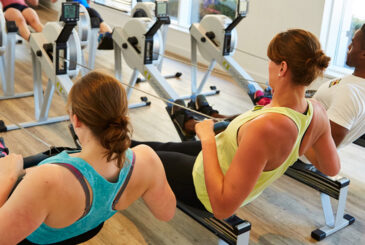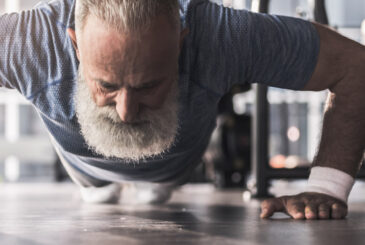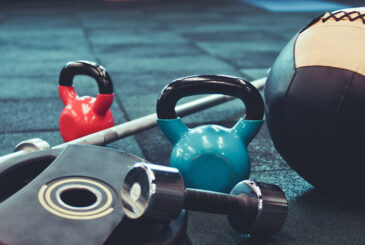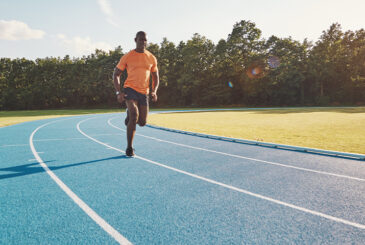The indoor rowing machine is a powerful training tool and here, Chris Scott highlights how he uses indoor rowing as a means of cross training for other his other sport, discus
Each year after a short end-of-season break, I sit down with a calendar in front of me and plot the major competitions I’m aiming for the following year. The structure of any training programme is always determined by the end goal.
As an international discus thrower, my training programme includes a surprising amount of activities that don’t involve a discus, or throwing. So why am I spending my time on these activities?
The phrase ‘cross training’ generally refers to an activity that might not be deemed as directly relating to the sport or activity your training programme is primarily geared towards, but that doesn’t mean these activities aren’t useful. In fact, quite the contrary, I’d suggest that cross training is essential for any serious sports person for a number of reasons.
The metrics on the screen provide immediate feedback about power, speed, stroke length, stroke rate and heart rate to name a few
Indoor rowing has becoming increasingly popular as a cross training tool in recent years. Although ergometers have been around since the 1980’s, they first began as specialised tools for serious rowers only. Now, most reputable training facilities will have a row of indoor rowing machines, and you’ll likely see athletes from all sporting backgrounds performing their various prescribed sessions.
Some sports (discus throwing as an example) require the generation of large forces over a very short timeframe (anaerobic), whilst others require an athlete to perform over an extended period of time such as in the example a triathlete (aerobic). In between the two extremes, we have athletes like 400m runners who rely on the glycolytic (lactic acid) system.
As an anaerobic athlete, the indoor rowing machine allows me to generate large forces concentrically whilst avoiding the eccentric stresses that you would experience with exercises like squats or deadlifts. Exercise movement patterns such as the power clean can be replicated on the rowing machine using long drive lengths, and lower stroke rates. Here’s an example of a session I regularly perform with an aim of increasing my power generation:
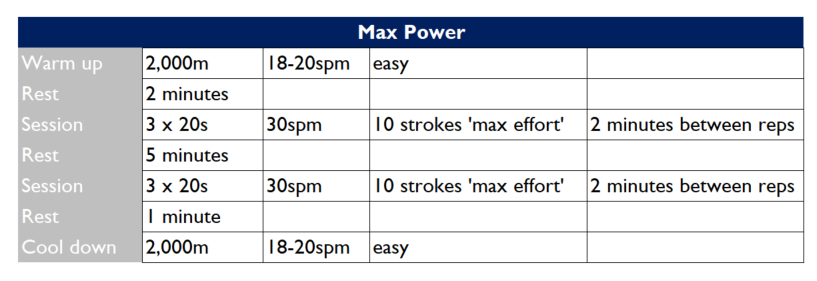
An athlete who regularly makes use of the glycolytic system can adjust the timeframes of the work sets, to repeatedly ‘dip’ into the lactic zone. A suitable session might look something like the below:
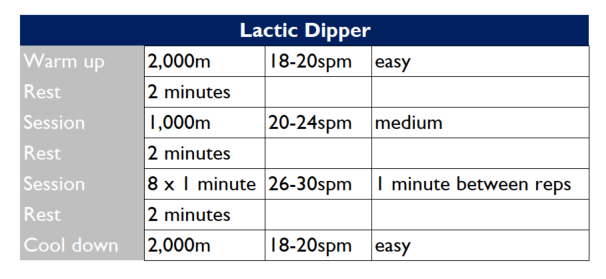
On the other end of the continuum the endurance aerobic based athlete will likely be performing a longer steadier session, and whilst intensity may be reduced compared to the two sessions above, the difficulty is by no means reduced. An example session may look as follows:

There is an additional BUT here – does an athlete always need to perform a session that even mimics the energy system requirements of their sport? The short answer is no, there are benefits to athletes anywhere along the continuum to performing any of the above sessions.
The versatility of an indoor rowing machine shouldn’t be underestimated and can provide benefit to anyone who decides to take a seat!
An anaerobic athlete although not absolutely necessary, will likely require a good amount of muscle cross sectional area to produce large forces. Cross training including general rowing exercises and other gym activities will assist in this quest, but studies have shown that low intensity aerobic exercise in any form will assist with ‘capillarisation’, or the improved ability to deliver oxygen to the muscles and clear waste products such as lactic acid more quickly. In short, easy cardiovascular exercise such as indoor rowing will help as part of a training programme towards a goal of improving musculature and strength.
Aerobic athletes have traditionally focussed on getting maximum mileage completed, but the understanding of the body’s requirements have shifted in recent years and now there is a greater focus on increased muscle development and improving the lactate threshold. An increase in muscle contributes to an increase in the force applied per stride and therefore results in an increased stride length. Additionally, an improvement in the heart rate % at which an athlete reaches their lactate threshold will result in improved oxygenation of the muscles and crucially, improved performance levels.
An indoor rowing machine can also be a vital tool for injury rehabilitation. Every stroke creates a large quantity of data points stored within the performance monitor. The metrics on the screen provide immediate feedback about power, speed, stroke length, stroke rate and heart rate to name a few – and each of these can be used to manage the progression and intensity on the journey of returning to fitness.
Whether you are an indoor rower, other sportsperson, or indeed someone just looking to improve general fitness and quality of life, then the versatility of an indoor rowing machine shouldn’t be underestimated and can provide benefit to anyone who decides to take a seat! Why not have a go at the sessions outlined above and see how you get on?
Photo: SOK Studio/Shutterstock.com



